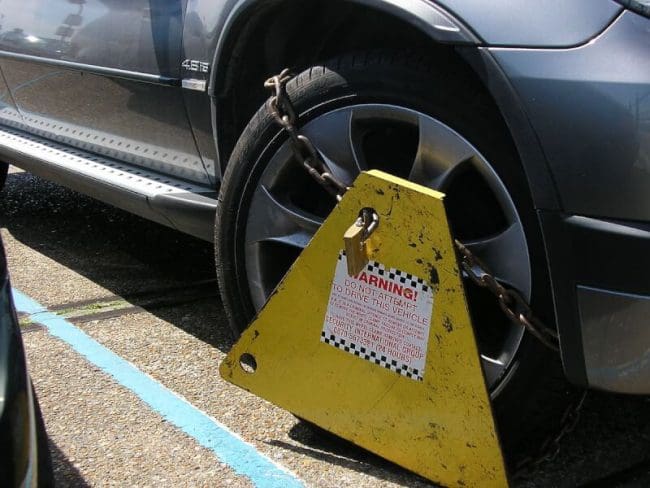Is there a strata building in Australia that has parking but no problems related to that precious little patch of real estate? You can’t clamp rogue parkers and you can’t tow them away … unless you are in Queensland. But even there the law has grey areas and bodies corporate are often reluctant to take action in case they end up on the wrong side of a law suit.
Flat Chat’s good friends in the state, the Unit Owners Association of Queensland (UOAQ) has been asking the government to develop clear protocols – so far to no avail. So they have developed their own set of recommendations on how to enforce your parking by-laws and share them here in the hope they may be useful to strata committees regardless of where you live in Australia.
For the last 3 years, the UOAQ Committee has been participating in the State Government Community Title Legislation Working Group. One of the areas reviewed was management of car parking in body corporate schemes. This was one area where the government appeared to make a decision not to decide.
However, this problem is not insurmountable. So here are a few guidelines to develop a car parking management program.
1. Act Reasonably
All body corporates are required to “Act Reasonably”. Rumours that your Committee Chairman has “divinely granted powers” are exaggerated. The Body Corporate can only make decisions via their committee, so schemes will need a parking plan to suite their unique requirements, developed and communicated by the committee to owners. Generally, 95% of the problem can be solved by communicating the requirements to all owners and as Committees rarely get it right the first time, providing a mechanism to communicate feedback from owners will be helpful.
2. Define and communicate your car parking problem
In most buildings, owners will have a designated car park space for their exclusive use with clearly defined access. Visitor parking spaces are provided for visitors. Problems can arise when people park in someone else’s space, in the access driveways or overstay their welcome in the visitor parking. Thus, a set of simple rules and consequences must be devised and enacted.
3. Elements of successful plans to consider
- Parking guidelines: Common sense guidelines on where you can park and for how long must be developed. For example never in someone else’s designated space or in an access driveway or on a lawn or other common property space, and perhaps 4-6 hours in a designated visitor space, or 10 minutes in a waiting space.
- Display the Guidelines: These guidelines should be displayed at the entrance or exit from the car park, and on signs in the visitor spaces. Most people do the right thing when properly informed. Also how an individual owner can report a problem to someone who will do something about it.
- Warnings for infringement: A set of stickers to inform folk who are infringing that they are doing the wrong thing. Some buildings have a general warning sticker, and then a final warning sticker. Some buildings made these final warning stickers very difficult to remove, but this will depend on the size of your building and the extent of your problem. The period of application of warning stickers must be reasonable i.e. not every 5 minutes.
- Clear escalation process must be communicated i.e. how many , how often and who can issue a general warning or final warning stickers, perhaps also a log book noting the car rego and the time/date (for repeat offenders) before a final warning sticker, who puts a sticker on an offending car, etc, etc.
- What happens then? This is where the government review of parking becomes relevant as they provided a set of guidelines for towing or clamping vehicles. Clamps are expensive, towing can damage the car, so these actions should be the very last resort. So the changes to legislation does not say much https://www.qld.gov.au/law/housing-and-neighbours/body-corporate/legislation-and-bccm/bccm-act-changes. But it does give you a link to guidelines for private parking at https://www.qld.gov.au/transport/safety/rules/road/parking It is useful to read and understand these guidelines in some detail. Everyone has different requirements. Very large buildings with significant issues tend to tow as they can demonstrate a clear process of warnings, smaller buildings have less choice. Do not let personalities be the problem.
- Legal problems: UOAQ members can find a summary of various legal reviews of this parking problem, where the body corporates have overstepped what is considered reasonable, in our members only “Knowledge Bank”. Access to the UOAQ Knowledge Bank is part of your UOAQ membership and is available in the “members” section of the UOAQ website.
Remember, all plans must be reasonable, developed via broad review for your body corporate community and very well communicated with feedback from individual owners.
This problem can be reasonably solved if your plan is well though through, carefully and thoroughly communicated and enforced reasonably.
UOAQ members can access the UOAQ Knowledge Bank here. and non-members can join the UAOQ HERE.


› Flat Chat Strata Forum › Current Page
Queensland is the only one of the larger states where it is legal to clamp or tow illegal parkers on common property – but it’s not the easy answer many strata owners crave.
[See the full post at: Clampdown: cures for strata’s parking disease]
The opinions offered in these Forum posts and replies are not intended to be taken as legal advice. Readers with serious issues should consult experienced strata lawyers.
› Flat Chat Strata Forum › Current Page
› Flat Chat Strata Forum › Current Page